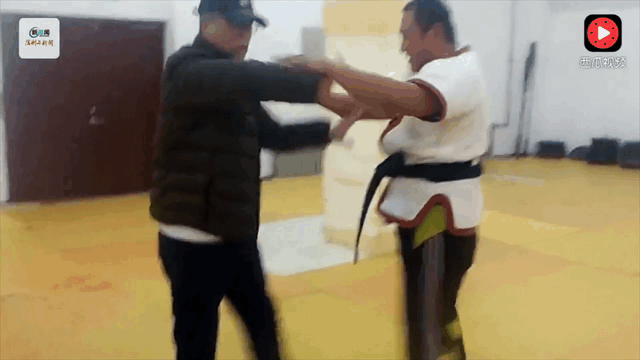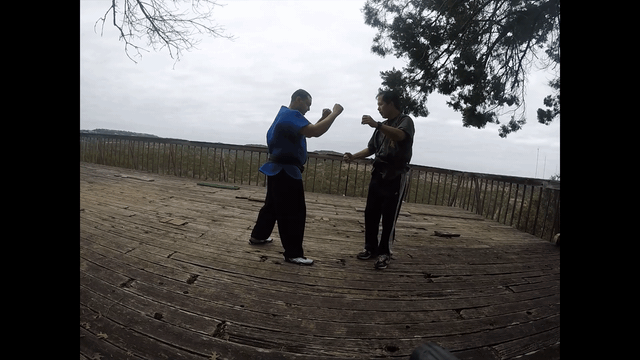Uh...what? I take exception with just about everything said here.
I have noticed that. Nothing wrong with that. I sometimes do it myself. That is how the one who says something and the one who questions if, learn if they stay open minded.
- Are you saying you do a take-down and then while they're falling you do an ax kick? That seems like a really small window with which to execute the kick. This seems more like something I'd expect in Dragonball Z than in a martial arts class. Doing an ax kick after they've fallen makes sense, but it's done after the breakfall is over.
- I first have to ask if "cross arm block" means you cross your arms and use the intersection to block, or if your arm is crossing your body.
- Whichever answer you have for #2, I don't see it as likely you're going to be able to use a block while you're falling down. If the person is capable of fitting a kick into that window, you probably won't see it coming (because you're look at the sky), and you probably won't be fast enough to stop that kick. I also don't see how a block (especially done while you're mid-fall) would damage the leg during an ax kick, especially if it's the first definition I provided for a cross block.
- If you're talking about the first definition of the cross block, I don't see how you would have enough power to strike the leg with it (and I can't really see it striking muscle). If you're talking about the second, I can see it striking muscle, but not bone. Legs are stronger than arms. I wouldn't want to block a kick without either going off of it's direction of power (i.e. a parry) or targeting the upper thigh (which is way too strong for a block to do much striking).
Our first line of defense against a kick is our footwork. It's a lot better to not have our body in the way of a foot or shinbone as it's coming at us. After that, the block isn't too important, it's grabbing the leg so we can control it that's important. Just to block a kick and meet shin with forearm is a recipe to get your arm broken. I almost had it happen once or twice in TKD sparring when I blocked a kick instead of avoiding it.
We also don't practice for blocking kicks in the middle of a breakfall, because I don't see it as very likely someone is going to be able to execute a kick before I've hit the ground.
1. In general I don't think it matters what causes them to be going down backwards. They will at least be partially distracted with a backwards fall/breakfall.
I am totally unfamiliar with Dragonball Z. Are you belted in that? Can you send some videos of you practicing that? What is your school's master's lineage in that art? But I congratulate you; it is always good in today's world to learn more that one art.
2. (a) I probably should have said
crossed arms block. It is done by crossing the arms at the wrists and striking forward. Sorry, better demonstrated than described. An upward block from the bottom is more tricky to strike at a good point with a heel down kick due to there being more power.
(b) I don't know how you do a heel down kick. In the Hapkido I learned the trail foot is stepped forward while swinging it across the body, up level with the kicker's head to a vertical position, and straight down as you drop into a squat. That develops a lot of power.
(c) Properly done you will have anticipated/recognized your opponent's fall and begun the heel down kick while he is falling.
3. (a) I did say if the person falling is able, because you are correct in that point. Also the speed and of the fall and the point of contact of body parts if your break fall is not good. True, the person falling may not be fast enough to block.j
(b) I wouldn't expect the block to occur while falling, but if the falling person is good enough, who knows. One more reason we Hapkidoin don't like to be on the ground.
(c) Looking at the sky (at least if you are keeping your head off the ground) is what would be expected, and would be the area from which you would expect to see a heel down kick coming from.
4. I don't think anyone would wish to block kicks as opposed to deflecting them. Remember that what I described was first a block, but done in such a way as to also be a strike. Also, don't misunderstand that I think blocking the heel down kick as I described would be a favorite defense. But it would be better than being hit with a powerful heel down kick.





